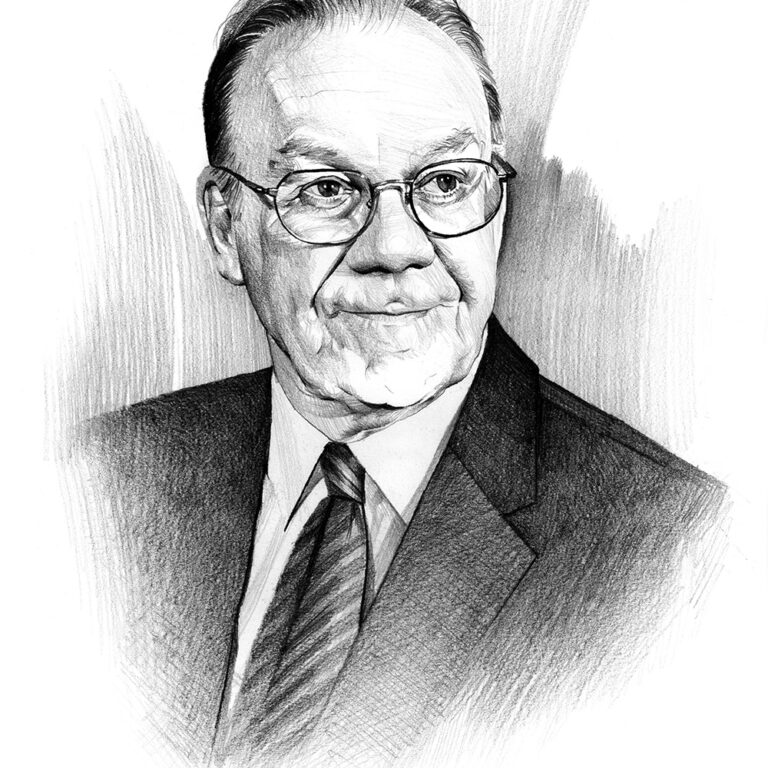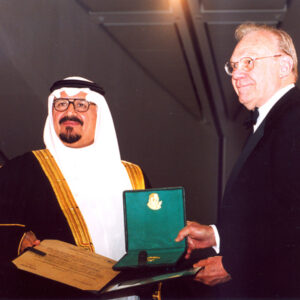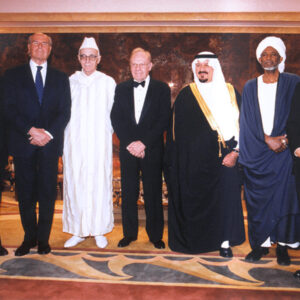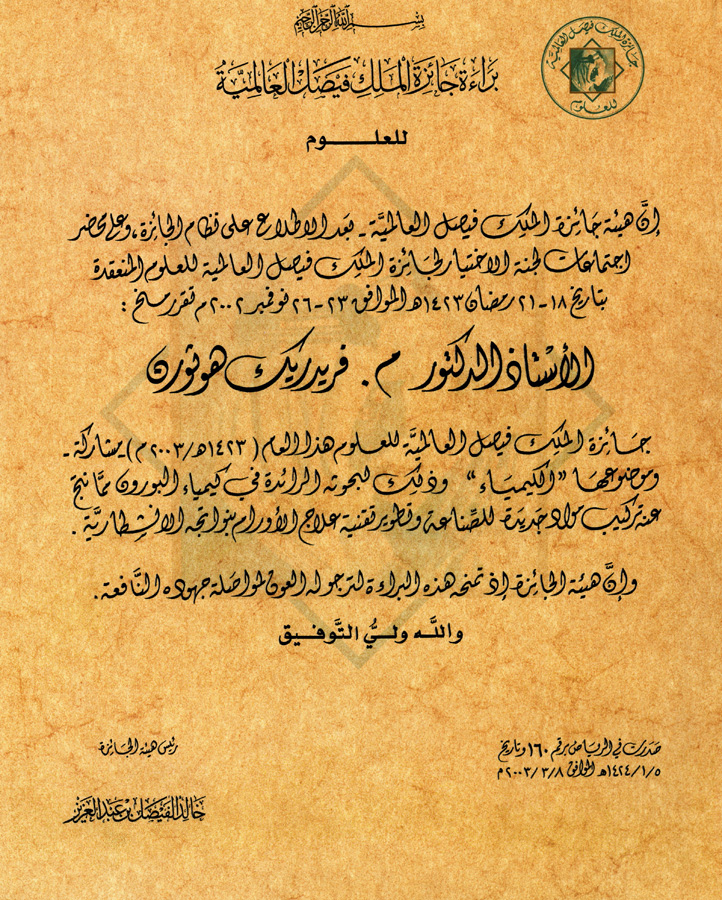

Professor M. Fredrick Hawthorne
King Faisal Prize in Science 2003 Laureate
Topic: "Chemistry "
Boron chemistry plays a major role in this developing medical enterprise, and I’m pleased to have made contributions to this effort

Frederick Hawthorne received his B.A. in chemistry from Pomona College in Claremont, CA in 1949, and a Ph.D. in organic chemistry from the University of California, Los Angeles (UCLA) 1953, followed by post-doctoral research in physical-organic chemistry at Iowa State University, Ames. In 1954, he joined the Redstone Arsenal Research Division of the Rohm and Haas Company in Huntsville, Alabama, as a senior research chemist. In 1960, he became a visiting lecturer in Physical-Organic Chemistry at Harvard University, and later returned to Rohm and Haas to become a Director of the company’s laboratories in Philadelphia. He became a full professor of chemistry at the University of California, Riverside in 1962. He returned to UCLA in 1969 as Professor of Inorganic Chemistry, and was later named the University Professor of Chemistry.
Professor Hawthorne was the principal originator of the field of polyhedral borane chemistry. He conceived and carried out the fusion of transition metals with carborane clusters. This led to the discovery of the huge fields of metallacarborane and metalloborane chemistry. He also sought and found homogeneous metallacarborane catalysts and new organometallic reactions characteristic of borane clusters, and produced boron-labeled biomolecules as target compounds in the boron neutron capture therapy of cancer. Most recently, carboranes and polyhedral boranes are being developed as molecular manifolds for drug delivery, as pharmacophores groups in drug design and as components of molecular electronic devices and nanomachines.
Professor Hawthorne was the author or co-author of around 550 research papers, 30 patents and 10 book chapters. He trained 211 Ph.D. students and postdoctoral associates from 21 different countries. Hawthorne’s distinguished research career has been heralded by a long list of other national and international awards and honors, including numerous prizes, medals, honorary degrees, awards, lectureships, fellowships of national and international scientific academies, and membership of learned societies and editorial boards. Professor Hawthorne served for more than 30 years as editor of Inorganic Chemistry. He was also a member of the Editorial Advisory Board of Bioconjugate Chemistry.
This biography was written in the year the prize was awarded.
- He joined the University of Missouri as a Professor of Radiology and Chemistry and Head of the International Institute of Nano and Molecular Medicine in 2006.
- He received the Priestley Medal in 2009.
- Professor M. Fredrick Hawthorne passed away on 8/7/2021.



